Fossil Records
Fossils are the preserved remains or traces of ancient organisms that provide evidence of the history of life on Earth. The study of fossil records is crucial in understanding the evolution of life forms and the geological history of our planet.
Formation of Fossils
Fossils are formed through a process called fossilization. This occurs when the remains of plants or animals are buried in sediment, which eventually hardens into rock. Over time, the organic materials in the remains are replaced by minerals, leaving behind a fossilized imprint of the original organism.
Types of Fossils
There are several different types of fossils, including:
- Body Fossils: These are the preserved remains of the actual organism, such as bones, teeth, shells, and imprints of soft tissues.
- Trace Fossils: These are evidence of the activities of ancient organisms, such as footprints, burrows, and coprolites (fossilized feces).
- Mold and Cast Fossils: These form when an organism's remains decay and leave an impression in the surrounding rock, which is then filled with sediment to create a cast of the original organism.
Importance of Fossil Records
The fossil record provides valuable information about the history of life on Earth, including the following:
- Evidence of Evolution: Fossils help us understand how species have evolved over time, providing a record of the emergence of new species and the extinction of others.
- Geological History: Fossils also provide insight into the Earth's past environments, climate changes, and the movement of continents.
- Biodiversity and Extinction Events: By studying the fossil record, scientists can analyze patterns of biodiversity and mass extinction events that have occurred throughout history.
Studying Fossils
When studying fossils, scientists use various techniques and approaches, including:
- Paleontology: The study of fossils and ancient life forms, which involves excavating and analyzing fossil remains to reconstruct past ecosystems.
- Carbon Dating: This method is used to determine the age of fossils by measuring the decay of radioactive carbon isotopes within the remains.
- Comparative Anatomy: By comparing the anatomical features of fossilized organisms with living species, scientists can trace evolutionary relationships and identify transitional forms.
Study Guide
Here are some key points to remember when studying fossil records:
- Understand the process of fossilization and the different types of fossils that can form.
- Recognize the significance of the fossil record in understanding evolution, biodiversity, and Earth's history.
- Be familiar with the methods and techniques used in the study of fossils, including paleontology, carbon dating, and comparative anatomy.
- Practice analyzing and interpreting fossil evidence to draw conclusions about past life forms and environments.
- Explore the concept of extinction events and their impact on the evolution of life on Earth.
By mastering these concepts, you will gain a deeper understanding of the fascinating world of fossil records and their role in unraveling the mysteries of our planet's history.
.◂Science Worksheets and Study Guides Fifth Grade. Sound and light energy
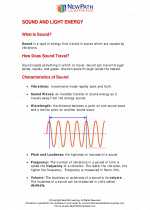
 Activity Lesson
Activity Lesson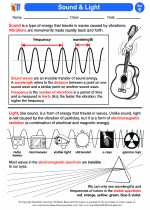
 Worksheet/Answer key
Worksheet/Answer key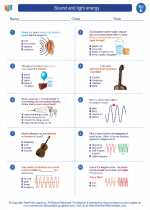
 Worksheet/Answer key
Worksheet/Answer key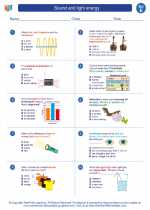
 Worksheet/Answer key
Worksheet/Answer key
 Worksheet/Answer key
Worksheet/Answer key
 Vocabulary/Answer key
Vocabulary/Answer key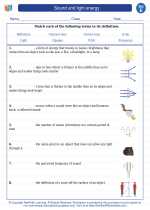
 Vocabulary/Answer key
Vocabulary/Answer key
